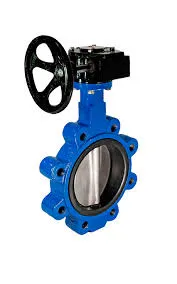ኅዳር . 18, 2024 21:57 Back to list
severe service
Understanding Severe Service in Industrial Applications
In the realm of industrial applications, particularly in the fields of manufacturing, energy, and chemicals, the term severe service refers to operating conditions that pose significant challenges to equipment and machinery. These conditions can include extreme temperatures, high pressures, corrosive environments, and abrasive materials. Understanding severe service is crucial for selecting the right materials, designs, and technologies to ensure operational efficiency, safety, and longevity of equipment.
Defining Severe Service
Severe service environments can be characterized by several factors. For instance, high-pressure systems may be found in the oil and gas industry, where pumps and valves need to withstand not only internal pressure but also external environmental factors such as temperature fluctuations and corrosive substances. Similarly, in the chemical processing sector, equipment must handle not only the pressure but also reactive materials that can cause chemical degradation.
The classification of severe service can vary between industries. In the power generation sector, for instance, components like turbines and reactors face extreme thermal stresses. In contrast, wastewater treatment facilities must contend with abrasive solids and highly corrosive agents.
Challenges in Severe Service Applications
One of the primary challenges of severe service is material degradation. Standard materials may suffer from rapid wear and tear, leading to frequent replacements and costly downtime. In severe environments, corrosion can also drastically shorten the lifespan of equipment. Therefore, the selection of materials with high resistance to corrosion, wear, and thermal shock is paramount. Advanced alloys, ceramics, and specialized coatings are frequently employed to enhance durability and performance.
Another challenge is the complexity of system design. Severe service conditions often require custom solutions tailored to specific operational needs. For instance, valves and other flow control components must be engineered to handle not just the pressures involved, but also the unique characteristics of the fluids they manage. As such, the integration of advanced engineering principles and simulations can play an important role in mitigating risks linked to severe service operations.
severe service

Solutions for Severe Service Applications
To address the complexities of severe service, industries are increasingly looking toward advanced technologies and methodologies. Predictive maintenance powered by data analytics, for example, allows companies to anticipate potential failure points before they lead to catastrophic breakdowns. Sensors embedded in machinery can provide real-time data on temperature, pressure, and wear, facilitating timely interventions that can save both time and money.
Moreover, leveraging high-performance materials is critical. The development of alloys that combine strength with resistance to environmental stressors is a key area of research. For example, stainless steel and nickel-based alloys are often favored in environments with corrosive chemicals, while advanced composites may be utilized in applications requiring both low weight and high strength.
The Role of Standards and Testing
Compliance with industrial standards is essential when dealing with severe service applications. Organizations like the American Society of Mechanical Engineers (ASME) and the American National Standards Institute (ANSI) set guidelines to ensure safety and performance in high-stakes operations. These standards help in establishing benchmarks for material performance, testing procedures, and overall equipment integrity.
Testing is another critical component of ensuring success in severe service environments. Rigorous testing protocols, including pressure testing, fatigue testing, and corrosion testing, help in identifying the weaknesses of materials and designs before they are deployed in the field. By understanding how materials react under severe conditions, engineers can develop solutions that are not only effective but also safe.
Conclusion
Severe service environments pose unique challenges that require careful consideration of material choices, design strategies, and maintenance approaches. Industries that effectively address these challenges through innovative materials, predictive technologies, and adherence to established standards can significantly enhance their operational efficiency and reduce long-term costs. As technology continues to advance and industries evolve, the ability to meet severe service demands will remain a critical factor in sustaining competitive advantage in the global market. Whether in chemical processing, energy production, or heavy manufacturing, understanding and managing severe service is not just an option, but a necessity for success.
Share